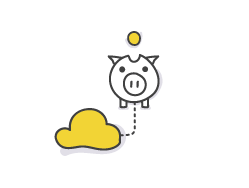More and more often I get asked about how to reduce AWS usage costs on current cloud infrastructure. Well, it depends on each account, but we will share below some suggestions that apply to most AWS accounts. Read our 5 AWS Cost Optimisation Tips.
Actually, Cost Optimization is one of the 5 pillars from the AWS Well-Architected Framework official guide, therefore there are plenty of ideas around the internet that can help us save some credits.
I will summarize AWS Cost Optimisation Tips. The ones I think helped us reduce AWS costs more effectively, categorized into 4 different groups.
5 AWS Cost Optimisation Tips:
1 – Remove unused infrastructure
Many times we forget to delete old resources that we are not using anymore, but we are paying for those! Seek & destroy the following:
- Old snapshots/unused EBS volumes.
- Unused network resources, such as NAT gateways.
- Inactive load balancers or any other compute resources that you are not using.
- Unused Elastic IPs and Health checks.
2 – Make the most of your current resources
Many times we can squeeze out a bit more of what we are already paying for, or pay less for the same service/usage.
- Create S3 lifecycle policies for moving infrequently accessed files to colder-storage.
- Use Reserved Instances whenever is possible (when you have been paying for the same on-demand instance for some months now).
- Right-size your servers and don’t overestimate resources. You can always adjust later if you need more power.
- Schedule and turn off/on servers that you are not using outside business hours (e.g.: staging environments!).
- Serve your static content through a CDN and not directly from its source. Images, styles, and static websites are a good choice.
- You should choose horizontal autoscaling whenever possible. Having a few but bigger servers would be more expensive than having more but smaller instances.
3 – Regularly check AWS billing and consumption tools
AWS provides several tools to analyze your expenses and help you understand what are you paying for. This AWS Cost Optimisation Tip is about monitoring.
- Explore Cost and Usage report to see if you find any candidates for resizing/releasing resources.
- Trusted Advisor would also help you locate unused services.
- Create budget plans to monitor billing changes.
- Disaggregate and share the billing info with the different teams/sections of your company. Involve them in our “cost optimization” plan.
4 – Keep instances at its latest generation
Each new generation of instances that AWS releases tend to both improve efficiency and lower costs. For example, a t3.medium has better performance and cost less than a t2.medium (AWS stands that T3 delivers up to 30% improvement in price-performance compared to T2 instances). Therefore, upgrading your instances to the latest generations will provide better value for your money.
5 – And once you finished… start over!
The last AWS Cost Optimisation Tip is about iteration. We should take cost optimization as a continuous and ongoing process. Monitoring your account expenses is as important as triggering an alarm if server performance is dropped. Cloud Financial Management (CFM) should be one of your Ops concerns to deliver the best business value, and so we know is one of the top AWS consulting services where we can help other companies.
Actually, cost optimization is an important topic that appears in most of the AWS professional certifications.
Watch our video about BigCheese and know more about us.

